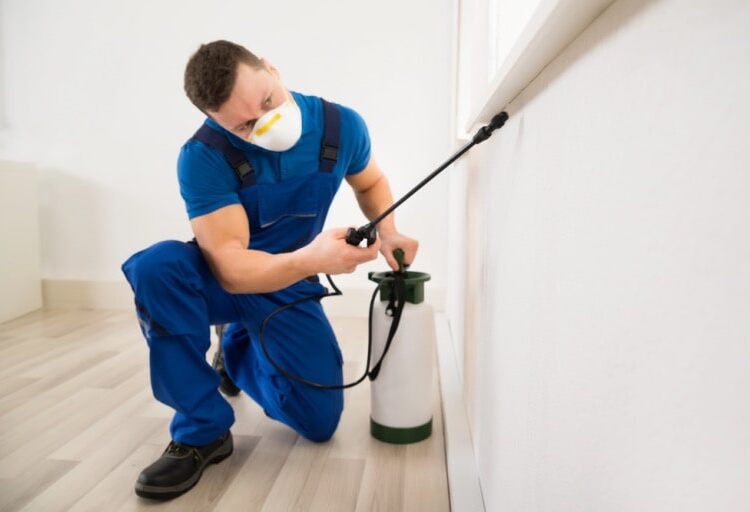Your home stands as both a sanctuary and an investment, making safety upgrades a vital priority for protecting both your family and property value. Many homeowners miss critical safety vulnerabilities until an incident occurs, but proactive assessment and targeted improvements prevent emergencies before they arise. Smart safety investments serve multiple purposes, from preventing accidents to increasing property value through strategic home improvements.
A comprehensive home safety strategy builds protection in layers, starting with basic prevention and extending through modern monitoring systems. Taking action now creates lasting security that grows with your family’s needs while maintaining your home’s market appeal.
Carbon Monoxide Detectors: A Crucial Addition
Carbon monoxide claims hundreds of lives annually, striking without warning through its invisible, odorless presence. This toxic gas seeps from malfunctioning fuel-burning appliances like furnaces, water heaters, fireplaces, and gas stoves, building up gradually in enclosed spaces.
The risk peaks during winter months when homes stay sealed against cold weather, trapping dangerous gases indoors. Modern carbon monoxide detectors provide reliable protection through sophisticated sensors that monitor air quality around the clock. The latest models integrate with smart home systems, sending alerts to mobile devices even when no one is home.
Proper placement of carbon monoxide detectors requires careful consideration of your home’s layout and potential gas sources. Install detectors throughout your home, and don’t forget spaces like your garage. Mount units at least 5 feet above the floor but below ceiling height where the gas typically concentrates.
Regular maintenance keeps your carbon monoxide detectors functioning at peak performance. Replace batteries twice yearly; try coordinating with daylight savings time changes for an easy reminder system.
Test units monthly by pressing the test button until the alarm sounds, and replace the entire detector every 5-7 years as sensor sensitivity diminishes over time. Keep detailed records of installation dates and maintenance activities to ensure consistent protection. If your alarm beeps to alert you of a low battery, immediately change it.
Other Must-Have Safety Upgrades
Every year, thousands of families face preventable household emergencies, from smoke inhalation to injuries from toppling furniture. Here’s what you can do to mitigate these and other risks.
Fire Safety
Ensuring fire safety in your home is absolutely paramount. Luckily, some relatively simple changes can go a long way. Start with the fundamentals: smoke detectors and fire extinguishers.
Like carbon monoxide detectors, smoke detectors should be installed throughout the home so you’re alerted to smoke no matter where you are. You’ll want to test the alarms in your detector regularly to make sure they’re working properly, and don’t forget to replace the batteries if they start to run low.
Fire extinguishers are another key safety item, as they can help prevent small fires from growing dangerously large. Keep multiple extinguishers around the home, especially in areas with higher fire dangers, such as in the kitchen or by your barbecue.
Childproofing
Creating a child-safe environment demands careful attention to hazards that might go unnoticed from an adult’s perspective. But this is one of the most critical things to do to ensure the safety of all members of your household. Once you’ve secured cleaning supplies and medications in latched cabinets, focus on preventing physical injuries by installing corner guards and door pinch protectors.
To eliminate tipping hazards, anchor heavy furniture and electronics to wall studs, ensuring these items stay secure even when climbed upon. Basement stairways and restricted areas require sturdy gates, while bathrooms need specialized locks to prevent unsupervised access to water hazards.
Smart Technology
Advanced security systems help revamp passive home protection into active on-the-clock safety monitoring. With video doorbells recording deliveries and documenting visitor interactions, families maintain awareness of front-door activities even while away.
Further, throughout the house, strategically placed smart sensors detect everything from water leaks to unexpected movement, triggering immediate alerts through smartphone apps. When integrated with smoke and carbon monoxide detection, these systems provide comprehensive emergency notifications that reach you anywhere, ensuring quick responses to developing situations.
Easy Steps to Begin Your Safety Journey
Home safety assessments often reveal surprising gaps in protection that put families at risk. Starting a safety upgrade project requires careful planning and prioritization, beginning with a thorough evaluation of current vulnerabilities and existing safety measures. Most homeowners discover their properties need attention in multiple areas, from basic fire prevention to modern security systems.
Try breaking down improvements into manageable phases that address the most critical risks first. This methodical, one-thing-at-a-time approach allows homeowners to build comprehensive protection while managing strapped budgets and overbooked calendars.
A thorough safety evaluation starts in the basement or lowest level, checking for common hazards like exposed wiring, water damage, or deteriorating materials that could compromise structural integrity. Documenting each potential hazard creates a clear picture of the current safety status. Areas around utilities, appliances, and storage spaces deserve particular attention, as these locations often harbor hidden risks that accumulate over time.
The implementation process begins with addressing critical safety gaps in the first month, prioritizing essential detection systems, and immediate hazard remediation. The second and third months focus on intermediate safety measures such as updated locks and lighting improvements. At the six-month mark, evaluate progress and adjust long-term safety goals based on changing family needs and new technology options.
Professional inspections complement these self-assessments, bringing trained eyes to spot potential issues homeowners might miss. Regular maintenance checks keep safety systems functioning at peak performance. As safety technology evolves, periodic reviews of available upgrades help maintain optimal protection levels.
Final Thoughts
Home safety upgrades deliver both practical protection and invaluable peace of mind. A well-protected home provides a foundation for family life while maintaining market appeal through documented safety features.
Take the first step today by critically and honestly assessing your home’s security and identifying the most pressing improvements your family needs now. You can always add on later, but the most life-saving items should be a priority on day one of moving into any new home.




